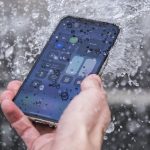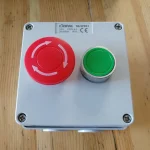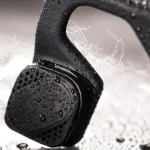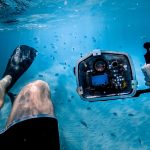The IP (Ingress Protection) enclosure system uses a 2-digit suffix to describe the degree of ingress protection for enclosures. IP55 and IP 56 both provide partial protection against dust that may harm equipment.
An IP55 rating provides some protection from water, including water sprayed from a nozzle onto the enclosure. IP56 offers deeper protection, ensuring powerful, high-flow jets of water also won’t get in. In this article, you will learn about the IP protection system, compare IP55 vs. IP56 ratings, and learn about typical IP applications.
IP Protection System
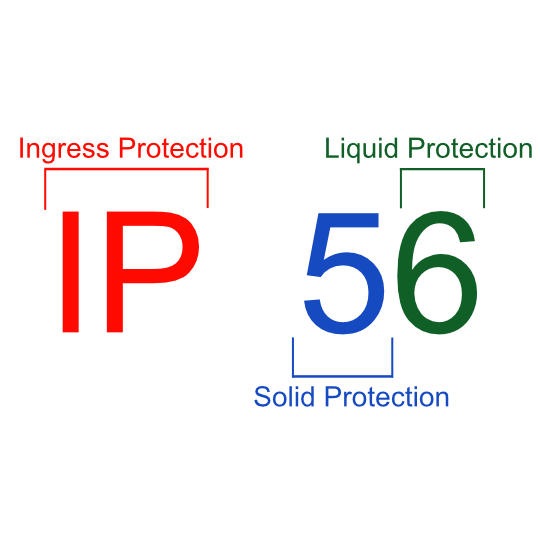
The IP rating is an international standard. It determines the degree of protection or sealing efficacy in enclosures against the infiltration of objects, water, dust, and contact. Also, it is compliant with European Standard EN 60529.
Products are noted by the initials IP (Ingress Protection), followed by two digits and an optional letter in the IP code. The two digits denote the level of intrusion protection versus solids and liquids. The optional letter notes the product’s resistance to pressure.
IP Ratings – Intrusion Protection
| Level | Intrusion Protection |
|---|---|
| X | No protection. |
| 1 | Protection from a large part of the body such as a hand (but no protection from deliberate access); from solid objects greater than 50mm in diameter. For example, accidental touch by hands. |
| 2 | Protection against fingers or other objects not greater than 80mm in length and 12mm in diameter. For example, fingers. |
| 3 | Protection from entry by tools, wires, etc, with a diameter of 2.5 mm or more. For example, tools, and wires. |
| 4 | Protection against solid objects larger than 1mm. For example, wires, nails, screws, larger insects, and other potentially invasive small objects such as tools/small, etc. |
| 5 | Partial protection against dust that may harm equipment. |
| 6 | Totally dust-tight. Full protection against dust and other particulates, including a vacuum seal, tested against continuous airflow. |
IP Ratings – Moisture Protection
| Level | Moisture Protection |
|---|---|
| X | No protection. |
| 1 | Protection against vertically falling droplets, such as condensation. ensuring that no damage or interrupted functioning of components will be incurred when an item is upright. |
| 2 | Protection against water droplets deflected up to 15° from vertical |
| 3 | Protected against spray up to 60° from vertical. |
| 4 | Protected against water splashes from all directions. Tested for a minimum of 10 minutes with an oscillating spray (limited ingress permitted with no harmful effects). |
| 5 | Protection against low-pressure jets (6.3 mm) of directed water from any angle (limited ingress permitted with no harmful effects). |
| 6 | Protection against direct high-pressure jets. |
| 7 | Protection against full immersion for up to 30 minutes at depths between 15 cm and 1 meter (limited ingress permitted with no harmful effects). |
| 8 | Protection against extended immersion under higher pressure (i.e. greater depths). Precise parameters of this test will be set and advertised by the manufacturer and may include additional factors such as temperature fluctuations and flow rates, depending on equipment type. |
| 9 | Protection against high-pressure, high-temperature jet sprays, wash-downs, or steam-cleaning procedures. |
IP55 vs. IP56 Difference
Intrusion protection for IP55 vs IP56 is the same (5). The differences lie in the moisture grade number (5 vs. 6).
| Rating | Difference | Similarities |
|---|---|---|
| IP55 | Protection against low-pressure jets (6.3 mm) of directed water from any angle (limited ingress permitted with no harmful effects). | Partial protection against dust that may harm equipment. |
| IP56 | Protection against direct high-pressure jets. | Partial protection against dust that may harm equipment. |
Common IP Applications
The universal IP rating system gives buyers the confidence to use products in a specific environment. For example, the term ‘waterproof’ doesn’t clearly define where and to what extent an item can resist moisture ingress. Therefore, an IP rating provides a far more specific account.
Protective IP cases may apply to lighting, controllers, electric instruments, power supply, industrial camera housings, desktop electronics, and measuring/control equipment, to name a few. Instrument applications such as volt-meters, digital thermometers, and flow readers are also typical. Additionally, electrical motors often bear the IP designation.
IP-rated enclosures compete in the industrial market with the NEMA (National Electrical Manufacturers Association) designation.
Common IP55 Applications
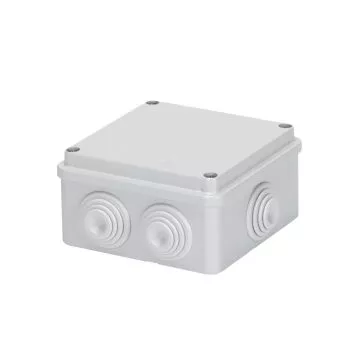
Many IP55 junction boxes provide waterproofing characteristics and offer a simple low-cost solution for general installation use. Outdoor electrical junction boxes keep sensitive electrical connections protected and secure in any environment, even underground. Ultimately the IP55 rating provides robustness waterproof for outdoor use, but without overengineering for indoor applications.
Common IP56 Applications
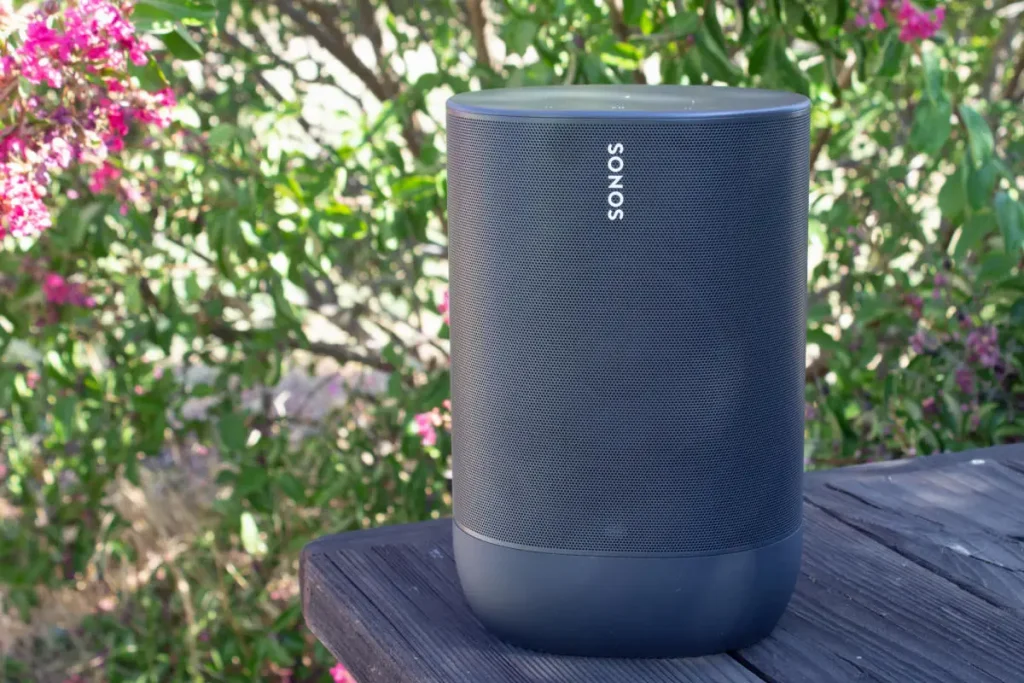
Lots of portable Bluetooth speakers are rated IP56 and up. For example, this Sonos Move smart speaker carries an IP56 rating, indicating it can withstand a blast from a pressure washer at a reasonable distance and is well protected from dust.
IP55 vs. IP56 – Which to Choose?
IP55 vs. IP56 provides a close comparison. The advantage of protection against inadvertent spray is important, but typically not warranted in most scenarios. As such, IP55 sees greater use in general with IP56 providing a better option near water.
